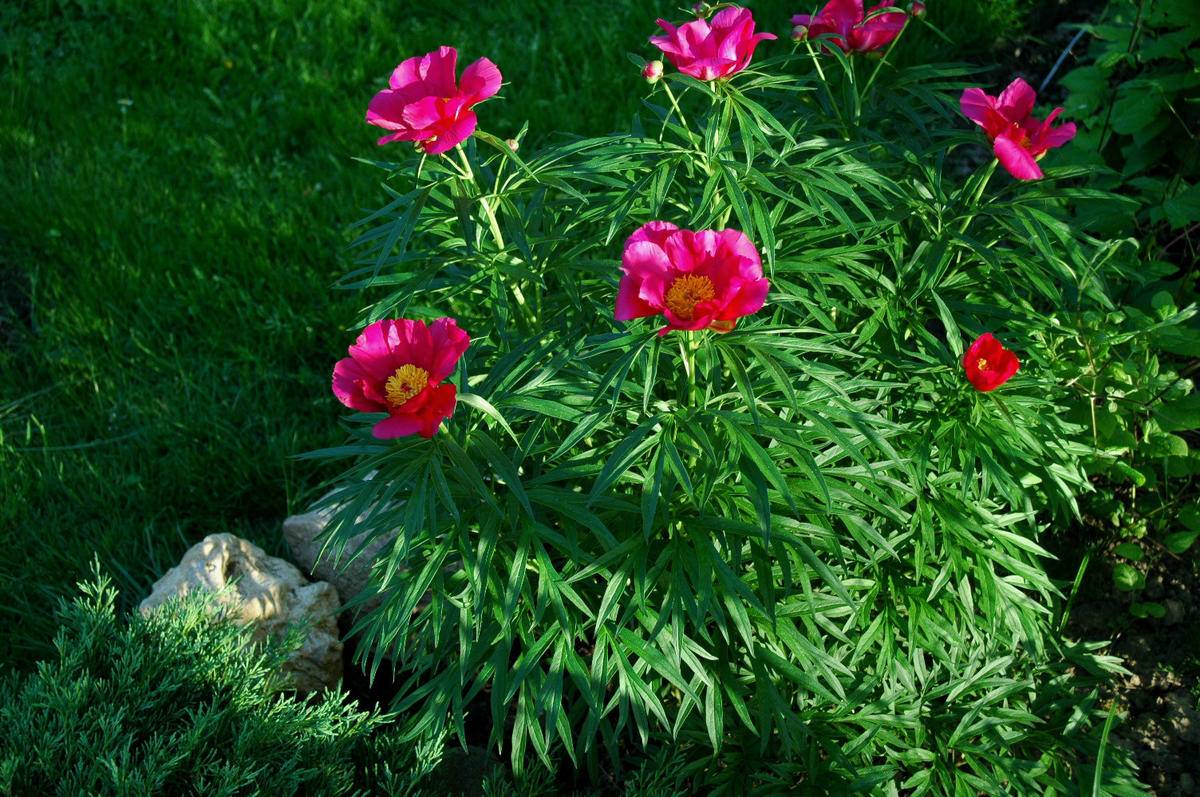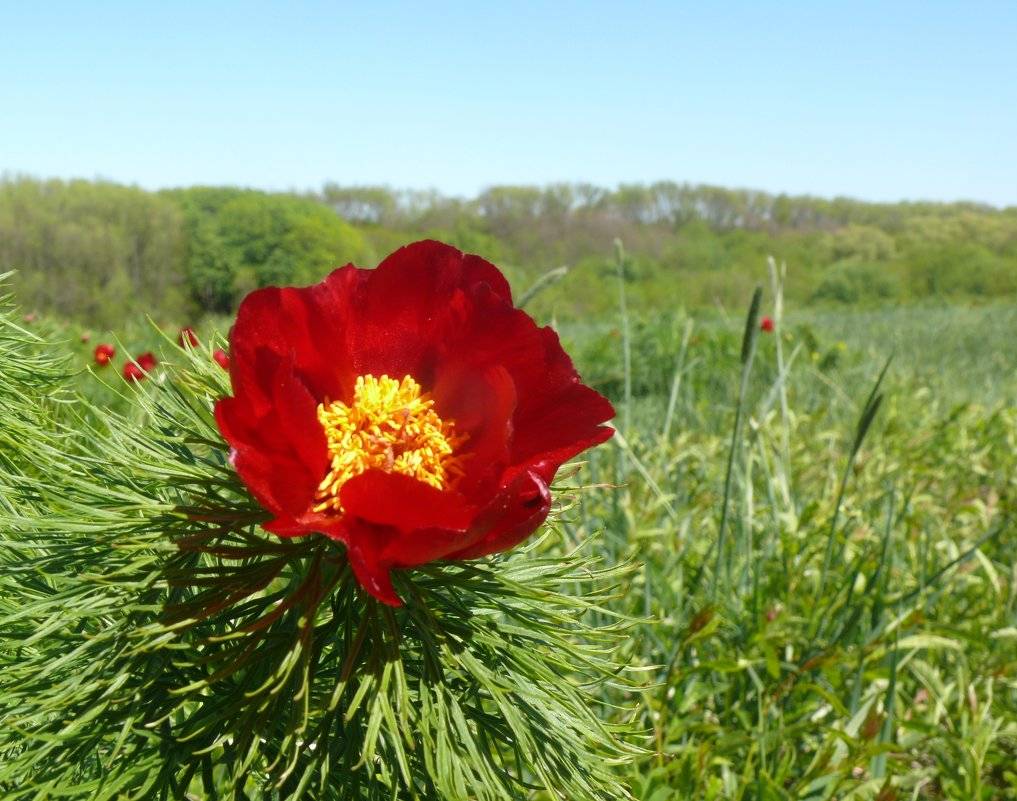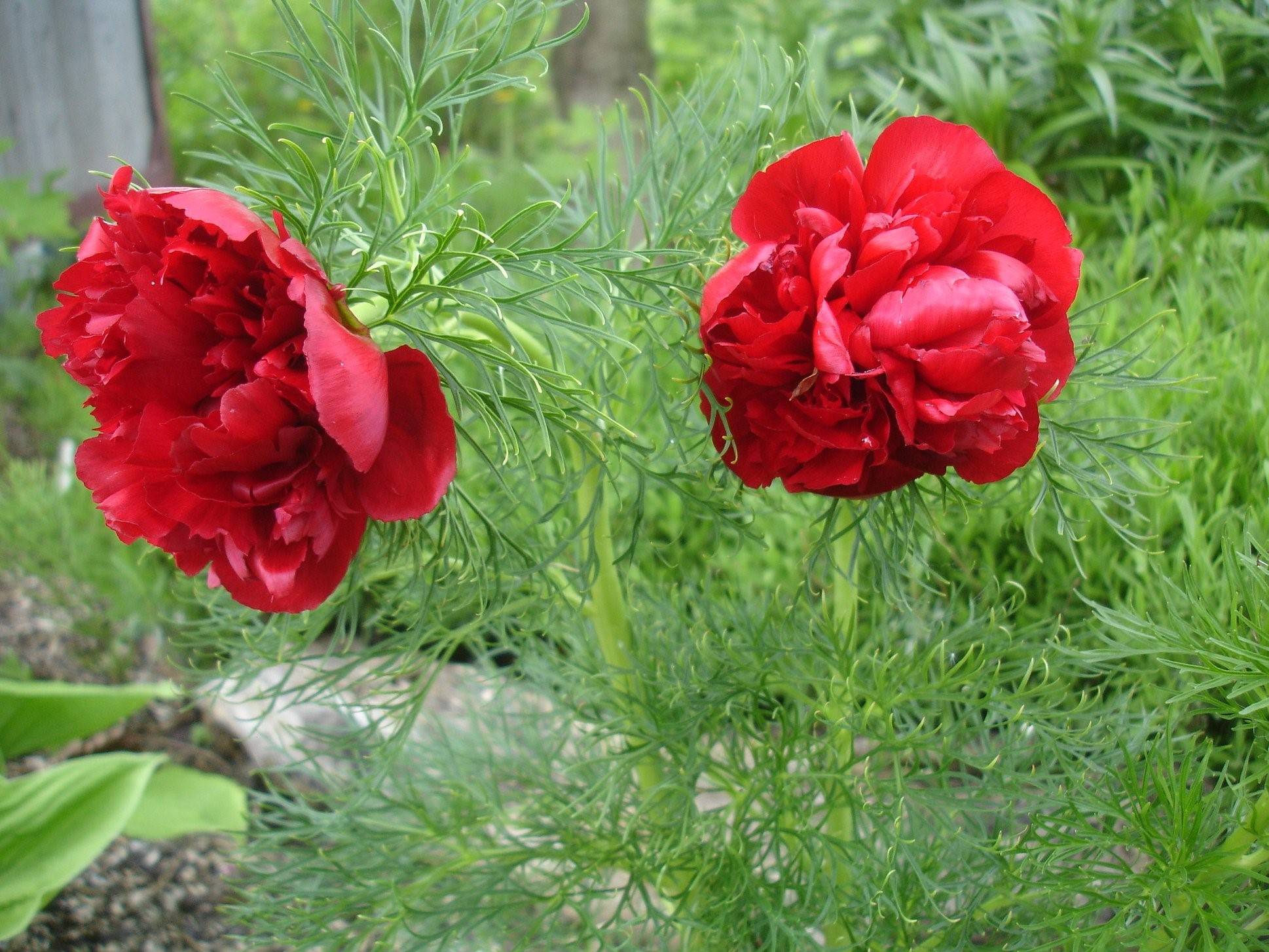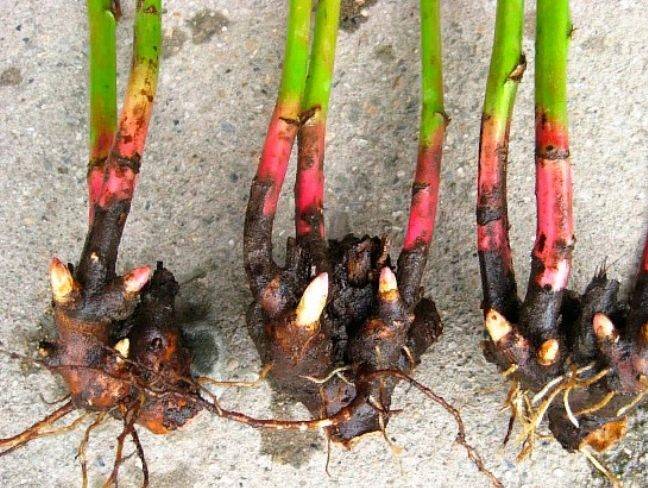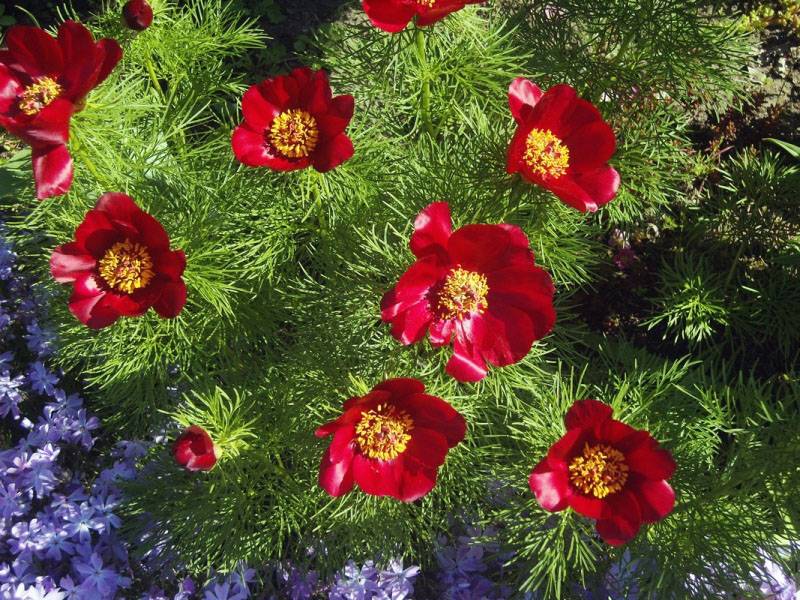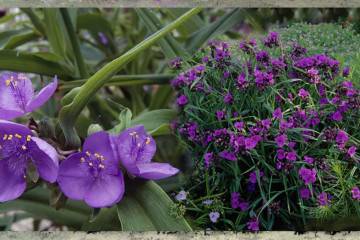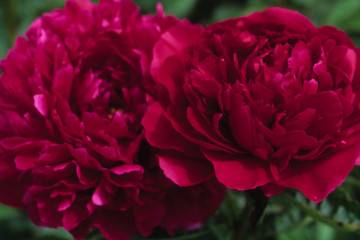Thin-leaved peony (Paeonia tenuifolia) - planting and care in the open field
Content:
Thin-leaved peony is a wild herb from the Peony family. It belongs to endangered species, therefore it is listed in the Red Book of Russia. The flower prefers to grow on the fertile black soil of the steppe areas. In Russia, the field peony in the wild can be found in the Crimea, the Caucasus, in the steppes of the Volga region.
Description of the flower
The thin-leaved peony is famous for its unusual beauty and stunning aroma. The stem can reach a length of 50-60 cm. A distinctive feature of the plant is its leaves - they are narrow, feathery, about 2 mm wide.
Peonies are perennials; they begin to bloom only for 4-5 years. The buds bloom in the spring, in April-May. The flowers are bright red, large, outwardly reminiscent of poppies. Each has 6-8 petals, in the middle you can see crimson stamens with yellow anthers.
Other names
Translated from English, the name of the flower is "fern-leaved peony". The Latin name is Paeonia Tenuifolia. The people often call him a crow, an azure flower. Also, the thin-leaved peony is sometimes referred to in the literature as a narrow-leaved, holly, small-leaved or wild peony.
Advantages and disadvantages of the variety
The narrow-leaved peony is characterized by frost resistance and relative unpretentiousness to weather conditions. Prefers fertile non-acidic soils, poorly tolerates excess moisture. Peonies do not take root well on swampy and nitrogen-rich areas.
The buds of this plant variety begin to open at the same time, which looks very beautiful. The decorative properties of the flower are enhanced by unusual feathery leaves resembling a fern.
Use in landscape design
Gardeners appreciate the plant for its unpretentiousness and unusual beauty. Moreover, the flower belongs to perennials, therefore it will serve as a decoration of the site for several decades. The bushes are decorative from early spring to late autumn, or, as they say, "from snow to snow." Plants fit perfectly into the landscape design of almost any site, not only lush red buds look great, but also leaves, and even fruits.
Peonies get along well with other plants; bushes can be alternated with plantings of other perennials, for example, tulips. Often they are planted around the perimeter of the lawn, they also look good against the background of conifers.
Varieties that are very popular with gardeners
Breeders have bred many hybrid varieties of the holly peony, differing from each other in the size of the leaves and stems, the shape and color of the petals.
The most popular are:
- Eaglet. The petals are blood red at first, then gradually fade and brighten. Peony bushes are quite tall, about 60 cm. The variety was bred in the USSR.It looks good against the background of rocky areas or walls;
- Tiny Tim. The variety was bred in the USA. It is distinguished by its unpretentiousness, it takes root well even in rocky areas. The petals are red with carved edges. The flowers themselves are medium-sized, 6-8 cm;
- Rubra Plena. The bush of the plant is small, compact, no more than half a meter high. Blooms in May. The petals are bright scarlet terry, the buds are large, about 10 cm;
- Early Scout. The plant is famous for its frost resistance, it can winter even without shelter. Flowers bloom in May, but lush emerald bushes are decorative until the first frost;
- Merry Meishain. The flowers are very beautiful, they are large in ruby shade. The variety begins to bloom early. The bush is tall, compact, fits perfectly into any landscape design;
- terry thin-leaved peony. The hybrid is unusual due to the petals. Their number in a flower can reach 20, in contrast to an ordinary bud. Terry petals are bright red. Several buds are located on one bush at the same time, which bloom at the same time. The leaves of the plant are thin, threadlike. Flowering is longer than that of other types of peonies, about 2.5 weeks.
Growing a flower: how to plant it in open ground
For growing a flower, it is better to choose a sunny, well-drained place. Peonies grow poorly with excess moisture and a lack of ultraviolet rays. But a little shade, especially in hot summer, will not hurt them.
Planting by root cuttings
The black peony is propagated by seeds or cuttings. The second method is more often used by gardeners. Choose a large bush, dig it up in September or late August. Cuttings with 2 or 3 buds are cut from the rhizome. They are ideal for planting in the ground.
Planting root cuttings also needs to be done in early autumn, since it is at this time that the root system is formed in plants. If you need to plant in spring, you should choose stems with rhizomes, otherwise the peonies will not take root.
How to prepare the soil for planting
An important condition for growing peonies is good soil drainage. To do this, a layer of gravel or crushed brick is laid on the bottom of the prepared pits. Vorontsov do not like too acidic soil. If necessary, the pH can be adjusted by adding lime or wood ash.
Landing procedure
Step-by-step instruction:
- Prepare holes for planting 0.6 m by 0.8 m, cover with a drainage layer, add fertilizer. There should be at least half a meter between the bushes.
- Cut off the cuttings from the rhizome, process the cuts.
- Plant the finished cuttings in a prepared place, cover with earth.
Seed planting
The seeds must be harvested in July, then wrapped in paper and stored in the refrigerator until mid-October. Almost before the onset of frost, they are planted in prepared soil.
Seeds can also be planted in winter. To do this, the pallets are filled with raw river sand and placed in a warm place, perhaps on a battery. At night, a decrease in temperature is necessary, you can move the containers to the windowsill. After the appearance of 2-3 pairs of leaves, the seedlings are transplanted into boxes with soil.
Plant care
The plant is unpretentious, so it will take a little time to care for it.
More water is required during the flowering period. And Vorontsy fertilize it three times a year.In the spring, ammonium nitrate is introduced into the soil; during the period of bud formation, you can use a mineral fertilizer with a rich composition for active growth.
The land around the bush is regularly loosened, cleaned of weeds. In late autumn, the root system is protected with a layer of natural mulch - sawdust or foliage.
Most varieties of peonies are resistant to pests and infections. If necessary, the bushes are treated with solutions of insecticides or fungicides.
Peony bloom
Peonies begin to bloom in the spring, in April-May. The flowering period is short, about 2 weeks. Then the petals fall off, a fruit with seeds is formed.
When the buds are blooming, peonies need more watering than usual. Also, it will not hurt to apply complex fertilizer under the bush.
The plant prefers well-lit, drained areas with loose soil. If these conditions are not met, that is, when growing in low-lying wetlands, the buds of peonies may not be tied.
Peonies after flowering
The ideal time for replanting plants is late August or early September. You can plant peonies in the spring, if necessary, but in this case there will be less chances that they will take root in a new place.
Before the onset of frost, the seedlings are covered with lutrasil or spruce branches. Adult bushes do not need to be covered.
Diseases, pests and ways to control them
Holly peony is resistant to fungi and pests. But when growing in an overly moist area, the appearance of rot or rust spots is not excluded. In this case, the bush should be sprayed with Bordeaux liquid. When pests appear, peonies are treated with insecticides.
Such a beautiful flower, like a thin-leaved peony, will decorate any personal plot. No wonder his image can be found even on the coats of arms of some Russian settlements.
